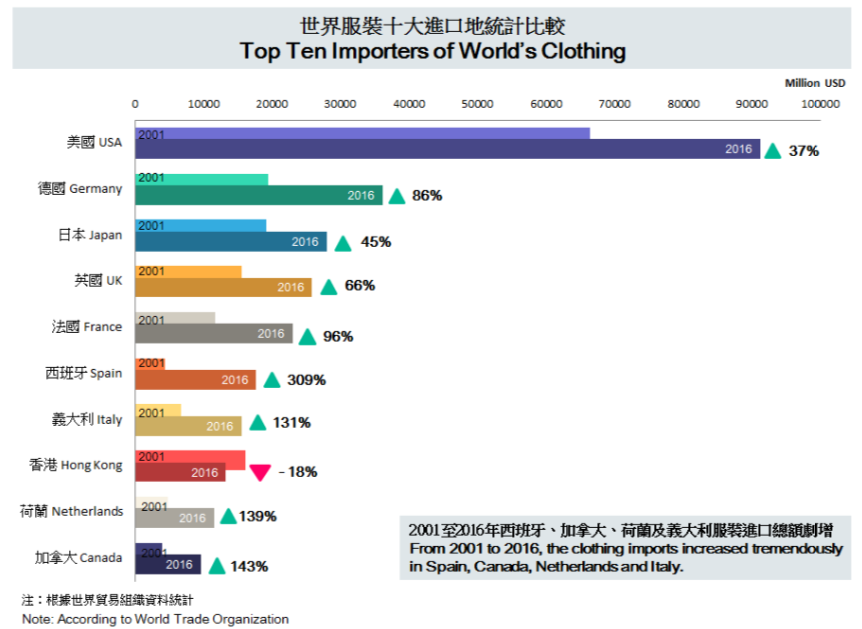The global clothing consumption has kept growing in the past 15 years from 2001 to 2016, with only a temporary setback during the financial crisis of 2008. USA, Japan and European countries are still listed top consumers according to their respective imports. At the same time, Spain increased its clothing imports by 309%, while Italy and the Netherlands have also registered an increase of exceeding 100%1.
The USA is the biggest market of fashion products in the world, and its textile and clothing imports take around 20% of the global market. Besides its large import demands, USA also has a very powerful production capacity in textile raw materials. For example, its cotton fiber production has been leading the global industry, and carbon fiber production has exceeded one-third of the total global demand. Industrial textile in the USA has become the most competitive segment equipped by high technology, intellectual property and advanced inventions. According to the latest prediction2, USA’s fiber consumptions for industrial textile, including automotive, construction, home furnishing, medical and healthcare, and sports, will soon surpass fiber consumptions for clothing products. The development trends for industrial textiles in the USA include innovative fiber technology, highly modern equipment, integrated with other industries like aerospace and communications, fast-react construction upgrade, mergers and acquisition restructuring, industry specialization, large-scale tailor-made, offshore value chain transfer, and global supply chain network.
In Europe, Germany is the major importer of textile materials. As the largest producer of automobiles, German car manufacturers have conducted extensive research in natural polymer matrix for door and boot lines and parcel shelves in recent years. Demands of biodegradable and lightweight textile products have increased greatly for fuel efficiency in its automotive industry.
